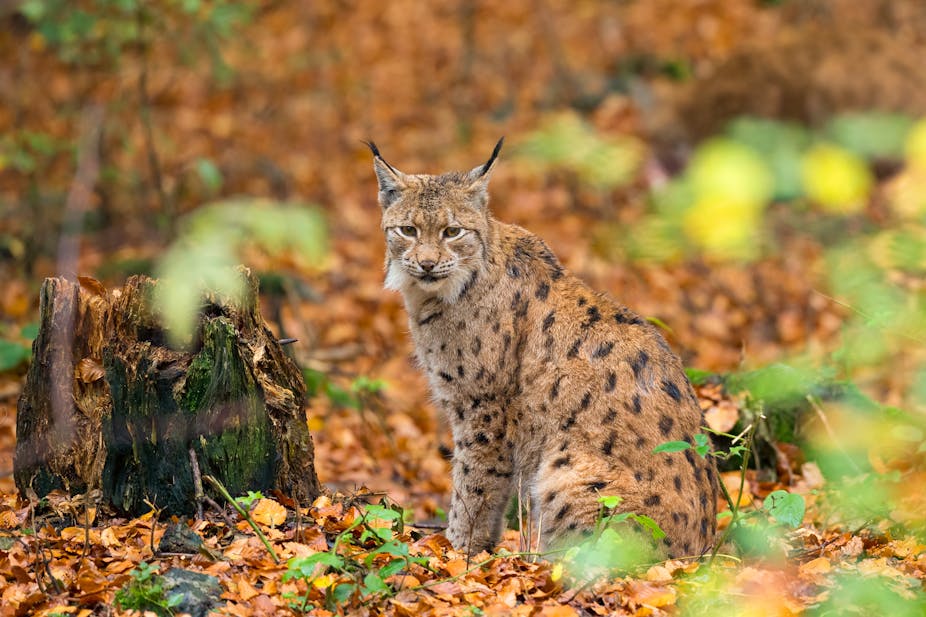The lynx: a short-tailed felid weighing up to six times more than your domestic moggy. This large carnivore once roamed the British Isles 1,300 years ago but, due to habitat destruction, overhunting of its prey and purposeful killing by humans, the species was driven to extinction in the UK. Now, there are plans to reintroduce this species to three sites in England and Scotland. But what are the chances of a success?
The International Union for Conservation of Nature (IUCN) has strict guidelines for reintroducing species into the wild. One of the key recommendations they make is that the main causes of the historical decline must be addressed to ensure success of the reintroduction.
In terms of the threats to lynx, we now have stringent land management policies in place so it is unlikely that the cat’s preferred forested habitat will be destroyed. The previous decline in the prey base (notably deer) is also not a problem today – in fact, many would agree that we have too many deer due to the lack of natural predators. But it is unclear to what extent the last threat – the purposeful killing by humans – is under control.
The human factor
Previous research has noted that the main cause of death among carnivores that have been reintroduced is due to humans. Although attitudes towards carnivores are generally positive in the UK, they become more negative among the people that could be adversely affected by these species and it is these people who have the power to kill. These are the farmers, gamekeepers and hunters (all of whom are allowed to own guns) who will be sharing their land with this species and may be worried about the damage that lynx can cause.

The IUCN clearly states:
Any translocation will impact and be impacted by human interests. Social, economic and political factors must be integral to translocation feasibility and design. These factors will also influence implementation and often require an effective, multi-disciplinary team, with technical and social expertise representing all interests.
Much research to date has looked into the biological factors surrounding the potential success of reintroducing lynx (eg. here, here and here), but far less attention has been focused on these important social, economic or political aspects. And it is the human dimension that will play a large part in dictating whether this project succeeds or fails.
It is therefore worrying that amongst the main proponents of the lynx reintroduction, only one social scientist is listed on its team of experts (the rest being biologists). This is not uncommon amongst species reintroduction projects: the Scottish Beaver Trial reintroduction team also does not have a social scientist.
Given the widespread call among conservationists to include more social science into wildlife management schemes, it is disheartening to see that more is not being done in this country to integrate the human aspects of conservation into environmental projects.
Consider the negative
Although I cannot deny that the lynx would bring positive effects to this country by reducing deer populations (which might have additional benefits for young trees), we cannot disregard the potential negatives. Lynx can occasionally kill livestock, which could have economic and psychological costs.

The frequency of predation may be low, but this has not stopped the continual persecution of reintroduced predators in other parts of the world, such as the Mexican wolf. Indeed, the reintroduction of lynx in France failed because of hunting. It is therefore crucial that we do not underestimate the potential for opponents of the lynx reintroduction to negatively impact the success of the project.
Research in other areas of Europe has shown that attitudes towards lynx are, in general, positive. It is likely that this is the case in the UK too, and I am sure that many British people would love to have lynx wandering the countryside again. Like the Scottish Wildlife Trust, I too feel that we have a moral and ecological case to bring this species back, but until more extensive work is undertaken to address the threat of human persecution, I do not hold out much hope for this felid’s future in the UK.

